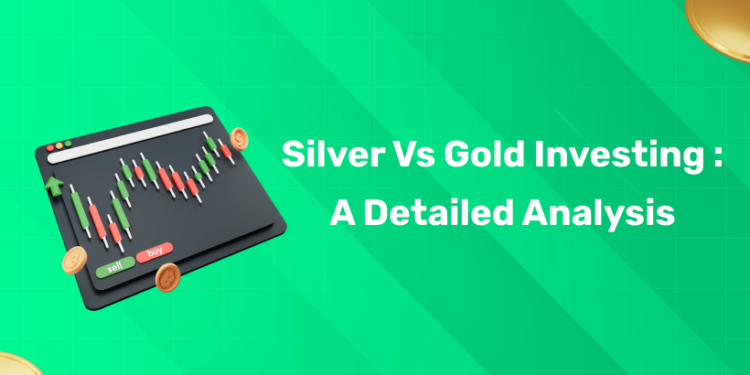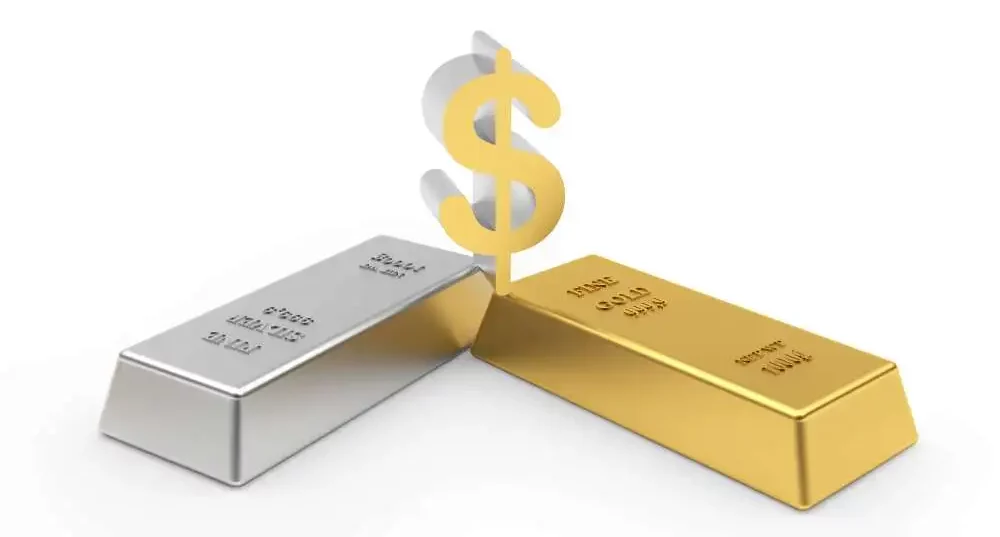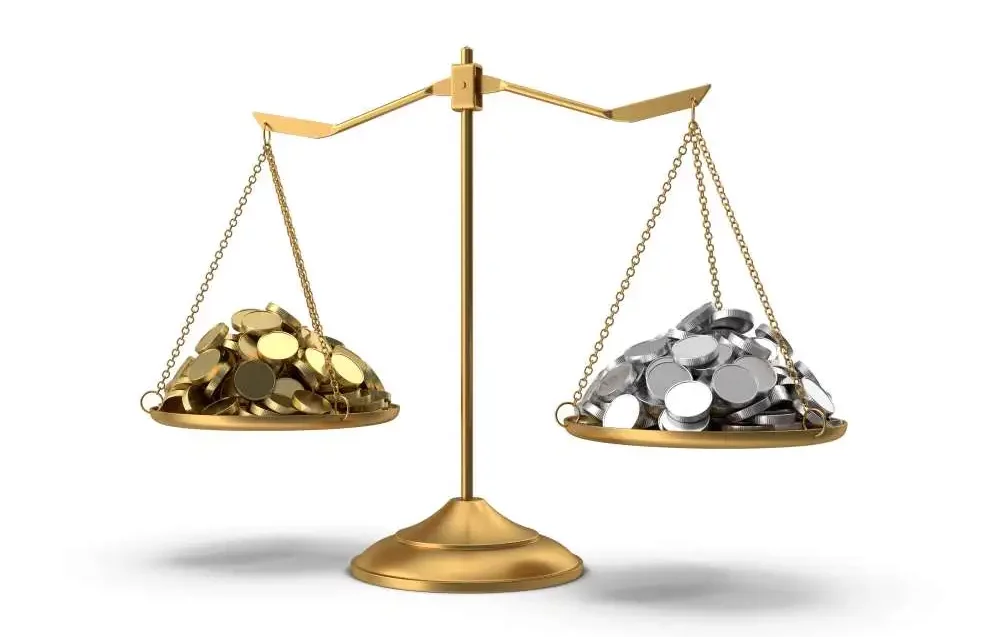Table of Contents
Whenever investors think of diversifying their portfolio, precious metals are the first option that generally comes on the top of their mind. The reason is simple. Precious metals act as a hedge, safer option, or a protection against inflation. And among precious metals, a topic that is frequently debated is silver vs gold investment. Which of these two metals offers better potential, lower risk, and fits your goals?
In this article, we explore:
- The current scenario and market dynamics
- Features and properties
- Investment options available
- Historical returns
- Risks and potential returns
- A final recommendation
- Top takeaways
Present Scenario – 2025
In 2025, the precious metals market has shown dramatic rallies. In the spot market, gold has crossed US$4,000 per ounce, beating records in several markets. However, on the other hand, silver also touched an all-time high of around US$49.57 per ounce. The major factors that led to this surge are industrial demand, tight supply, and investor inflows.
In 2025, Gold and silver ETFs have offered returns somewhere between 44–47 % so far. Gold continues to attract safe-haven flows, while silver is benefiting from both investment demand and strong industrial use for purposes such as electronics, solar, EVs etc. In India, silver has outperformed gold in segments of 2025, drawing more investor interest.
Thus, in the present scenario, silver is grabbing more attention, but gold continues to be a foundation for stability.
Start investing like a pro. Enroll in our Stock Market course!
Key Features: Silver vs Gold Investment
1: What is a stock?
Below is a table summarizing key physical and financial attributes:
| Feature | Gold | Silver |
| Role | Primarily monetary, store of value | Dual role: monetary + industrial |
| Liquidity | Very high (global markets, central banks) | Good, but smaller markets, more volatile |
| Volatility | Relatively lower | Higher volatility |
| Unit cost | High per gram/ounce, easier to hold value in small size | Lower per gram/ounce, accessible to small investors |
| Industrial demand | Only up to an extent (jewellery, some electronics) | Heavy (electronics, solar, photovoltaics, batteries) |
| Correlation to economy | More defensive | More cyclical, tied to industrial cycles |
| Safe-haven behavior | Strong | Somewhat with gold, but also sensitive to industrial demand |
| Storage & insurance cost | Moderate | Higher relative cost due to bulk |
Observations:
- Because silver has a large industrial component, its price swings tend to be stronger (upside in booms, downside in recessions).
- Generally, during the times of crisis, gold often acts as a buffer; silver might amplify the reaction.
- Gold/silver ratio – It is a ratio that shows how many ounces of silver are needed to buy one ounce of gold. This tool is used by traders to gauge relative valuation. When the ratio is high, silver is relatively cheap, and vice versa.
Investment Options: How Can You Gain Exposure?
The various options of investing in gold and silver are listed below:
Physical ownership
- Bars, coins, bullion: Available for both gold and silver.
- Jewellery: More common for gold; silver jewellery has lower margins.
- Storage & insurance: Costs can erode net return, especially for silver which is bulkier.
Paper / non-physical forms
- ETFs / Exchange Traded Funds / Exchange Traded Commodities: Gold ETFs and Silver ETFs are available in several markets.
- Futures & Options: Leveraged exposure, high risk.
- Mining stocks / royalty companies: Indirect exposure; correlated but with equity risk.
- Sovereign Gold Bonds (SGBs) (for gold): Government-issued bonds tied to gold price with interest.
- Digital gold / tokenized metal: Digital certificates backed by physical metal.
- Metal Savings Accounts / Accumulation plans: Periodic accumulation in metal units.
In many markets, gold is more developed in paper forms (ETFs, bonds, etc.). Though silver ETFs came later, they are gaining traction.
When investing in silver vs gold, the major factors that you should keep in mind are transaction cost, liquidity, custody risk, and premium/discount spreads.
Past Returns & Performance
Long-Term Trends
- Since 1971, in U.S. dollar terms, gold has clocked an average annual return of 14–15 %.
- Silver over long periods tends to have higher upside but also deeper drawdowns.
- Over multi-decade horizons, gold is often viewed as more “reliable” while silver is more aggressive.
Comparative Cycles
- Silver often outperforms gold during strong bull runs, due to its leverage to industrial demand.
- But in sideways or crashing markets, silver can underperform more.
- In many past cycles, gold maintained value better during downturns.
Recent Returns (2024–2025)
- In India, gold delivered a 21 % return in 2024, whereas silver gave a return of 17 %.
- In 2025 so far, both metals have surged. ETFs of gold and silver have offered returns up to 44 % in some markets.
- In India, silver has in parts outpaced gold in 2025.
- Historically, silver shows 1.5–2× the standard deviation of returns compared to gold due to its higher volatility.
Stock Market Training Reviewed & Monitored by SEBI Registered RA
Trusted, concepts to help you grow with confidence. Enroll now and learn to start investing the right way.
Know moreRisks & Potential Returns
Risks
- Volatility Risk
- Silver is more volatile; steep downswings in recessions are possible.
- Demand Collapse
- Industrial demand may slow (e.g. in scenarios such as downturns), hurting silver more.
- Changes in technology (substitutes) could lead to a reduction in demand.
- Liquidity & Premium Risk
- Spread between buy and sell, premiums, storage cost can erode gains.
- Physical silver is heavier relative to value; storage is less efficient.
- Currency & Macro Risk
- Precious metals are quoted in major currencies (e.g. USD). As a result,exchange rate movement affects local returns.
- Regulatory / Tax Risk
- Import/export duties, capital gains taxes, holding limits can affect net returns.
- Counterparty / Custody Risk
- For ETFs, digital gold, or token products, risk of issuer default or mismatch.
- Timing Risk / Speculation
- Especially with silver, timing becomes more critical due to large swings.
Potential Returns
- Silver tends to offer higher upside in purely bullish cycles.
- For instance, if a bull run gives 50 % to gold, silver might deliver 80–100 % or more under ideal conditions.
- But the downside is steeper; silver might lose much more in corrections.
- Some strategists anticipate silver reaching new highs due to constrained supply and growing industrial demand, especially from renewable energy sectors.
Silver vs Gold Investment: What’s More Likely to Suit You?
When evaluating silver vs gold investment, your choice should depend on:
- Risk appetite: If you prefer steadier returns with less stress, gold may be safer.
- Time horizon: Longer horizons allow weathering silver’s volatility and potentially capturing its upside.
- Role in portfolio: For hedging or safety, gold is more dependable; if you want growth within the precious metals bucket, silver adds excitement.
- Diversification: Many investors keep both, using gold as a foundation and layering silver for alpha.
Final Recommendation & Portfolio Suggestion
Given the strengths and risks:
- For a conservative anchor in precious metals, gold should be the core holding due to its stability, liquidity, and safe-haven appeal.
- Add silver as a satellite or tactical allocation for higher upside potential, but limit exposure to a reasonable percentage (e.g., 10–20 % of your metals allocation).
- If you are looking for easier liquidity and lower holding costs, go for ETFs, digital or bonded forms, unless you are particular about physical metal exposure.
- Make sure that you rebalance periodically. Also, watch the gold/silver ratio for indications to switch allocations.
- Stay away from over-leveraged bets in silver futures unless you understand risks thoroughly.
Top Takeaways
- In 2025, both gold and silver have surged; silver is a major source of attraction due to industrial demand and investor flows.
- Gold’s major features are lower volatility, stronger safe-haven appeal, and more stable long-term returns.
- Silver has leveraged upside but also a deeper downside. The major reasons are industrial exposure and smaller market.
- Major investment options: Physical metal, ETFs, futures, mining stocks, digital/token forms.
- Going by historical data, gold often races ahead in downturns; silver leads in strong bull cycles.
- A balanced strategy: core in gold + selective silver exposure.
- Always consider costs, liquidity, storage, and macro variables.
Stock Market Training Reviewed & Monitored by SEBI Registered RA
Trusted, concepts to help you grow with confidence. Enroll now and learn to start investing the right way.
Know moreFrequently Asked Questions
Which would be a safer option?: Investing in silver or gold?
Gold is generally safer as it is less volatile, more liquid, and less dependent on industrial demand. Due to its dual nature, silver may be riskier.
Can silver outperform gold in the next bull run?
Yes. Analysis of historical data shows that silver has outpaced gold in strong bull markets. It is because of silver’s leveraged exposure to industrial demand.
Can you explain the term gold/silver ratio in simple terms? Also, why is it important?
The gold/silver ratio measures how many ounces of silver equal one ounce of gold. Traders use it to identify relative valuation – when the ratio is high, silver may be undervalued relative to gold.
Should I hold physical metal or use paper instruments?
Paper instruments (ETFs, digital products) offer liquidity and lower storage cost. Physical gives direct ownership but carries storage, insurance, and premium costs.
Is silver good for small investors?
Yes. Due to its lower unit price, silver becomes more accessible for small investors. But if you are a small investor, be prepared for higher volatility and make careful cost considerations before investing.
How should I allocate my investment between gold and silver?
Within the precious metals, a conservative approach would be to invest 70–90 % in gold and 10–30 % in silver . Depending on your risk tolerance, adjustments can be made.
What makes the most impact on prices? Is it industrial demand or safe-haven flows?
For gold, safe-haven / monetary flows are the decisive factors. For silver, industrial demand plays a major role during expansion phases, so both the factors matter.














